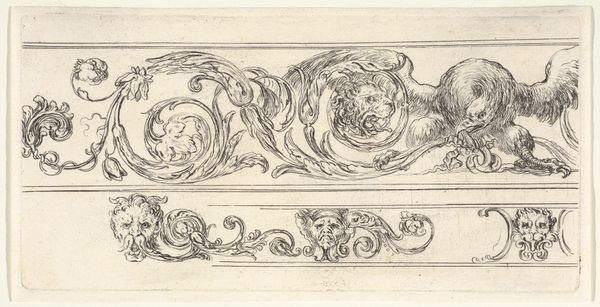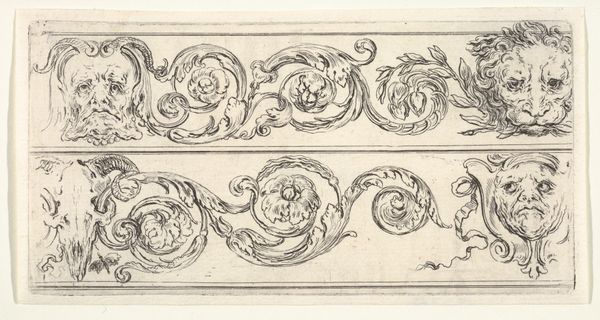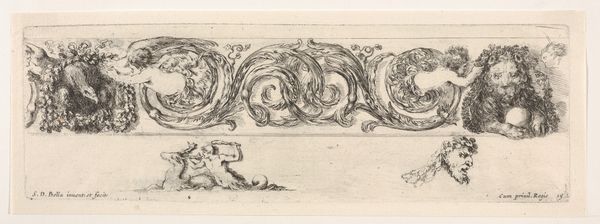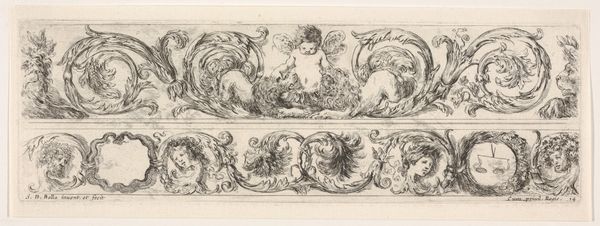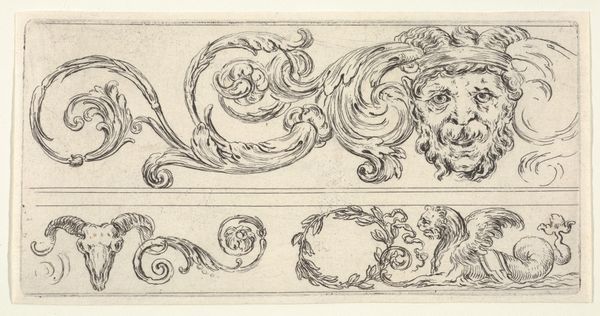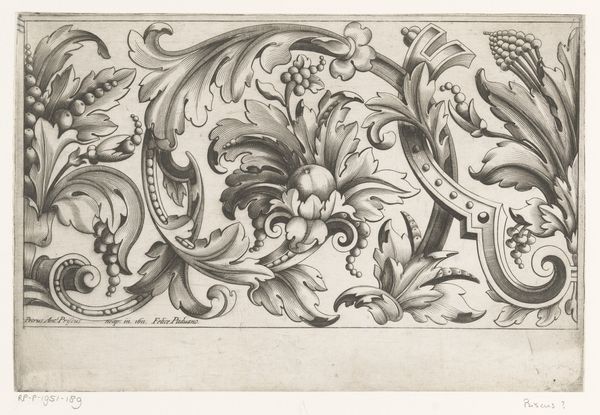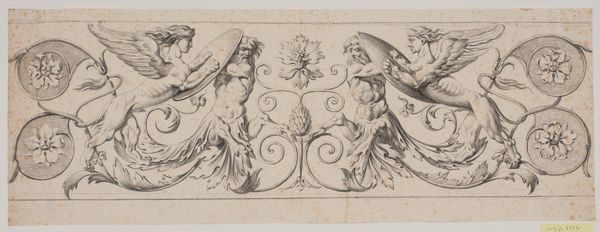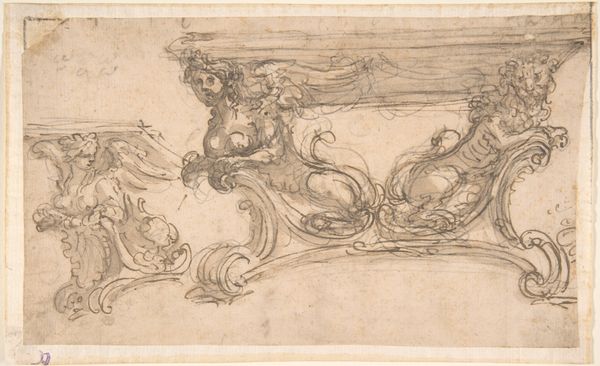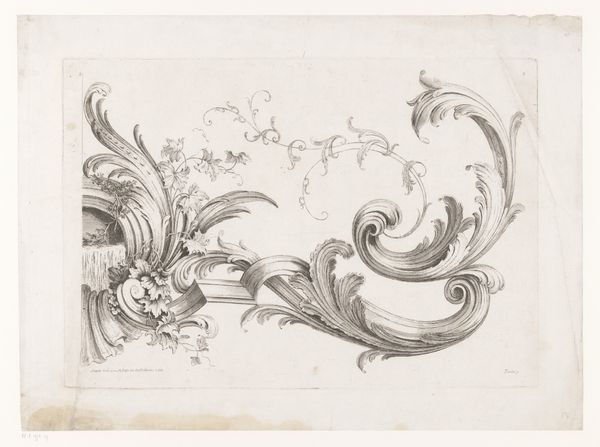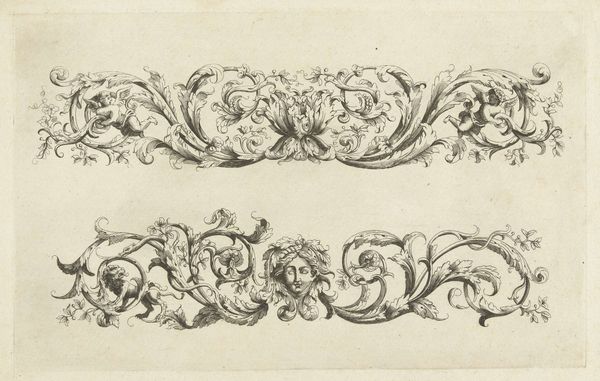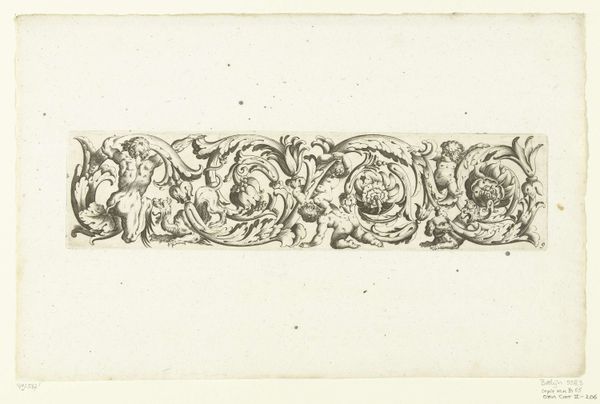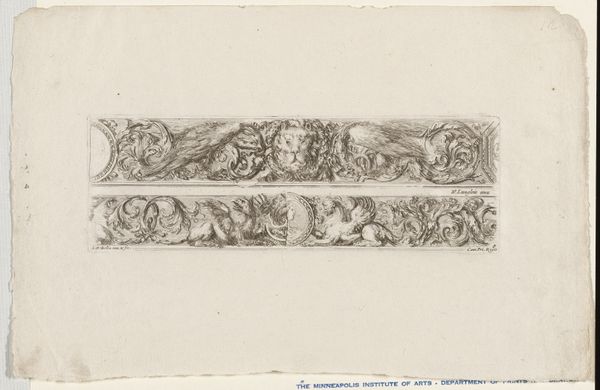
Plate 6: a triton and a siren fighting at center, their legs as scrollwork, a swan to right, the grotesque head of an old man below, from 'Friezes, foliage, and grotesques' (Frises, feuillages et grotesques) 1638 - 1643
0:00
0:00
drawing, ornament, print, engraving
#
drawing
#
ornament
#
allegory
#
baroque
# print
#
engraving
Dimensions: Sheet: 2 9/16 × 4 15/16 in. (6.5 × 12.6 cm)
Copyright: Public Domain
Curator: Here we have "Plate 6: a triton and a siren fighting at center, their legs as scrollwork, a swan to right, the grotesque head of an old man below, from 'Friezes, foliage, and grotesques'", an engraving by Stefano della Bella dating from around 1638 to 1643. Editor: It has this fantastic energy. There’s a raw, almost frantic quality to the lines, despite the delicate subject matter and scale. The use of line feels so central to the artwork as a piece of printed material and it is impossible not to look into. Curator: Della Bella was known for his exquisite detailing and ornamental designs, frequently commissioned by the Medici court. These prints were initially intended as inspiration for other artists and artisans. It shows the important function that the circulation of printed images held at the time. Editor: So, this isn't "high art" necessarily, but a working document, a set of plans! Knowing that transforms how I look at the labor embedded within. The artist acting as designer for other makers… incredible, from art object to instruction manual. The cross pollination of visual culture, social status and craftsmanship is really quite something here. Curator: Indeed! Della Bella straddled various worlds, from courtly commissions to these more widely disseminated prints. These grotesque designs were popular during the Baroque period, reflecting a fascination with the fantastic and the macabre. The original drawings of Bella acted as the raw material for wider creative movements throughout Europe. Editor: That grotesque head is like a rough sketch. Almost an off-cut, something quick from life, pinned amongst decorative swirls and mythological struggles. A reminder of humanity versus ornate excess... the head in particular has a beautifully unfinished, hand-wrought feel to it that juxtaposes the overall image. Curator: And it served as a catalogue, or directory, of ideas open to use, manipulate or reference as artisans saw fit. And because of that, it’s meaning is really dependent on its reception and re-use, beyond the artist and into the cultural norms of the time. Editor: Exactly, it highlights how artistic agency can shift with material use, from singular genius to collaborative craftsmanship. These sorts of commercial-aesthetic interactions fascinate me in terms of social and historical studies. Curator: A very prescient view. I agree. Looking at "Plate 6," it highlights the dynamic interplay between the artist, the patron, and the broader artistic community. Editor: A vital reminder of how "art" becomes intertwined with society through material circulation and artistic labor.
Comments
No comments
Be the first to comment and join the conversation on the ultimate creative platform.
